
As guest speaker in our latest webinar series on hip and lower extremities applications, Dr. med. Simon Weidert discusses his experience with a patient-specific implant in acetabular defect reconstruction; his first with Materialise's aMace solution.
Dr. Weidert is a consultant at the trauma orthopedic department and head of the computer-aided surgery and simulation research group, in the Munich University Hospital in Germany. He mainly works on primary and trauma surgeries and has great interest in 3D printed applications. 3D-printed anatomical models for the use of pelvic fractures are already standard in his hospital.
Examining the acetabular defect
The case discussed by Dr. Weidert is that of a 33-year-old male patient. The patient's injuries were caused by a motor vehicle accident that occurred over two years ago in an Eastern European country. His extensive injuries comprised several fractures, including an acetabular fracture (which caused shortening of the leg), peroneal nerve injury, radial nerve injury, and injury in his left knee ligament. The acetabular fracture could not be treated due to the patient's condition at the time, and had been left to heal as such.
The patient's mobility was largely confined to a wheelchair. Using crutches was extremely difficult because of the “dropped foot” resulting from the peroneal nerve injury and because of his recent radial nerve reconstruction, causing the need for support from others. He had a T-shaped fracture with a dislocated postero-caudal segment that had healed in a faulty position. The femoral head had destroyed the acetabular rim in the postero-cranial part and the new hip center was more than three centimeters higher than its original anatomical center. This resulted in a Paprosky type 3A defect.
Defining an ambitious strategy
Classic strategies such as tantalum grafts and bone grafts were first considered for treatment. But as bone loss was so high, reconstruction of the acetabulum would be very difficult. Still, Dr. Weidert and his team wanted to find a solution to help their young patient, and decided a new approach was necessary: they contacted Materialise and sent them the patient's CT scans.
As part of the preoperative analysis provided by Materialise, the report showed a quantitative representation of the bone loss and the deformation of the acetabulum.
Starting from this analysis, the acetabular reconstruction was planned. In the report Materialise provided a proposal of the acetabular implant position and orientation, and the screw configuration. The surgeon had full control over the design and within a few phone calls with Materialise an optimal reconstruction was discussed.
It was evaluated whether the center of rotation could be moved down towards its original anatomical position without overstretching the nerves, ligaments and muscles. The surgeon went for an ambitious strategy, to reconstruct the hip center almost entirely in its anatomical position.
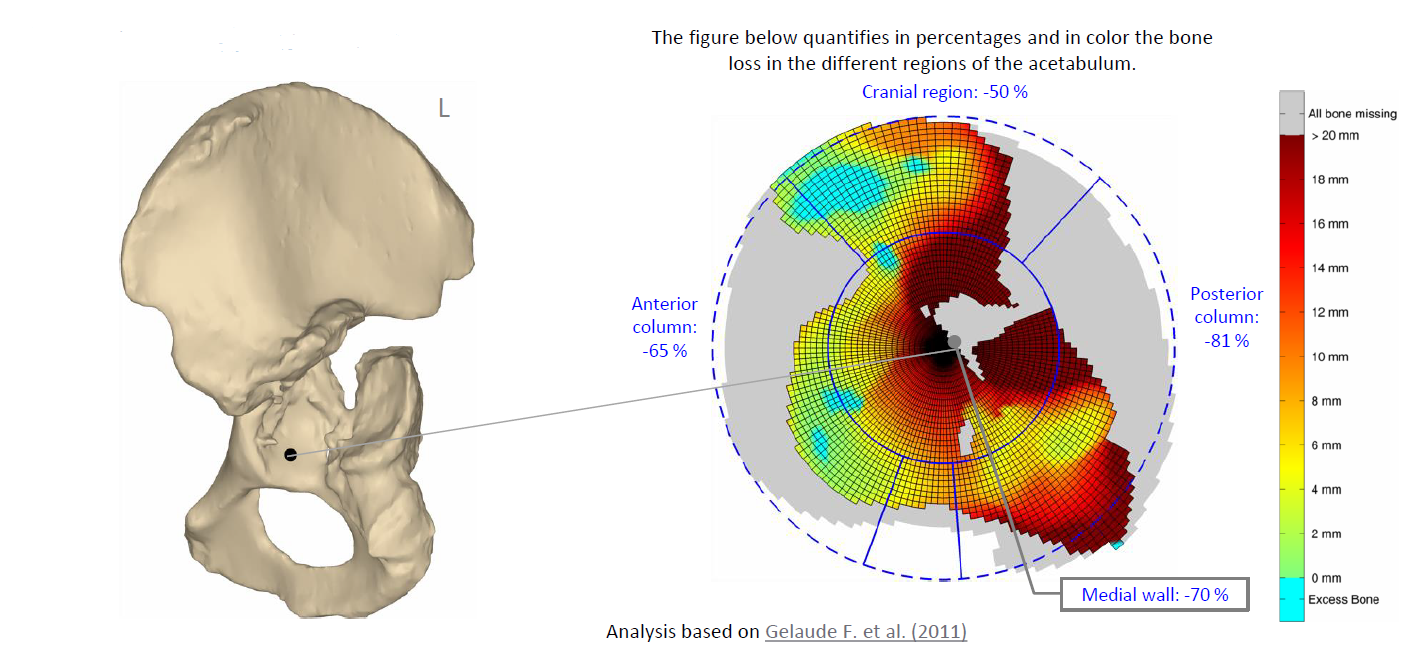
The screw configuration, of both cup and flange screw for cross fixation, was based on the bone quality, which the surgeon could see in the planning report. He provided his feedback on the position and amount of screws and the design was finalized incorporating all valuable feedback from the surgeon.
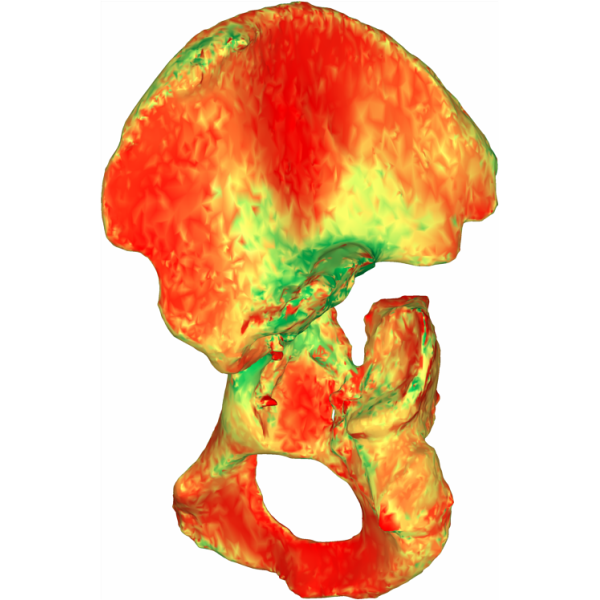
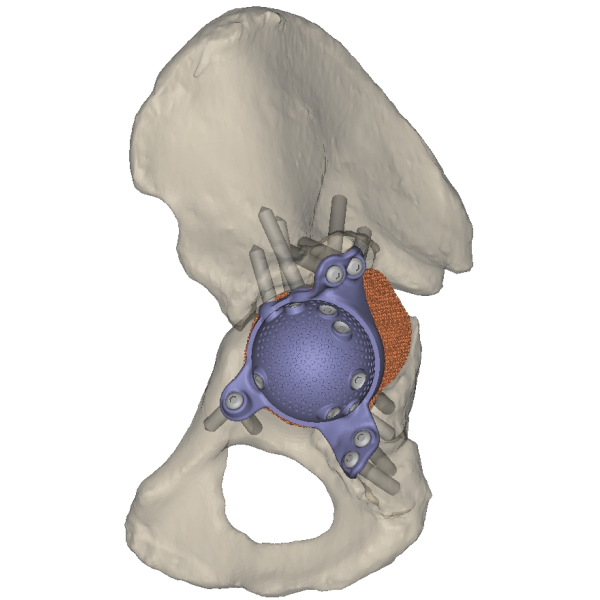
Prepping for surgery
After approximately three weeks, the result of collaboration between Dr. Weidert and Materialise arrived as a custom-made 3D printed titanium implant. It was one piece made up of a plate and a porous augment. The porous augment was made to fill the defect hole, provide good bone contact and enable bone ingrowth.
Another piece that came with the final package was an actual size bone model including removable parts of the bone that needed to be removed. Using the bone model the surgeons could prepare themselves for the surgery. They could put the actual titanium implant in the printed bone and see exactly how it would fit during the operation. A trial implant made of plastic was also included. Finally, the package incorporated drill guides to steer the surgeons in predrilling the screw holes as per the planning. With the case report, and to speed-up the surgery, the team could verify the necessary screw lengths and have them ready for the surgery.
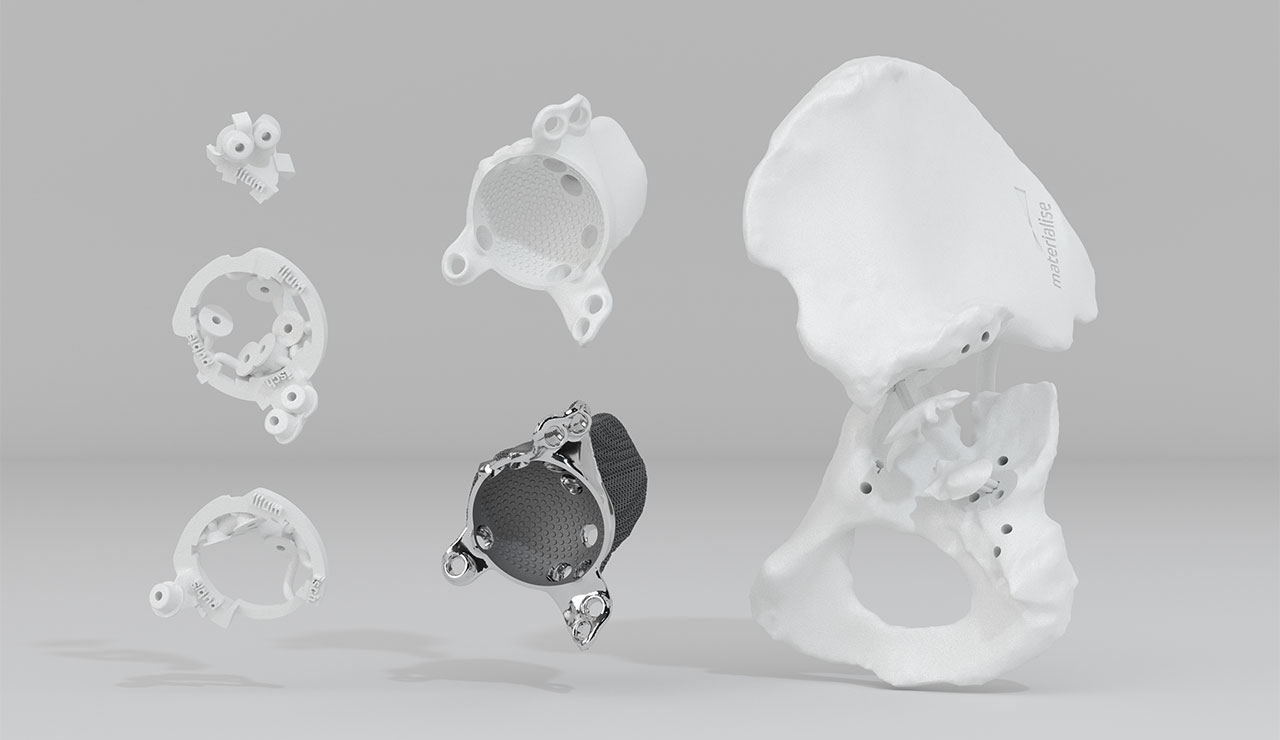
The surgery
During the surgery, the bone model proved its worth by being used as a map, to help determine the orientation of the bone in the patient. Both the bone model and trial implant could be used to verify that enough tissue and bone had been removed before inserting the original implant. Finally, the titanium implant was put in, and pushed into its final position, where it was already stable without the use of any screws. Then, the patient-specific drill guides were used to predrill the screw holes. Despite all the preparation, some screws were still hard to drill. Dr. Weidert recommends an angular drill and screwdriver for such tasks. The cup screws were the hardest to insert, but essential for good fixation.
After the operation, X-rays were taken to look at the position of the implant. The team could see that many screws were in good bone stock. At first glance, the titanium mesh fit well into its space. On a second projection the team could see there was a small space inferiorly between the bone and the porous augment. Even so, the implant felt stable and good, and Dr. Weidert was satisfied with the outcome.
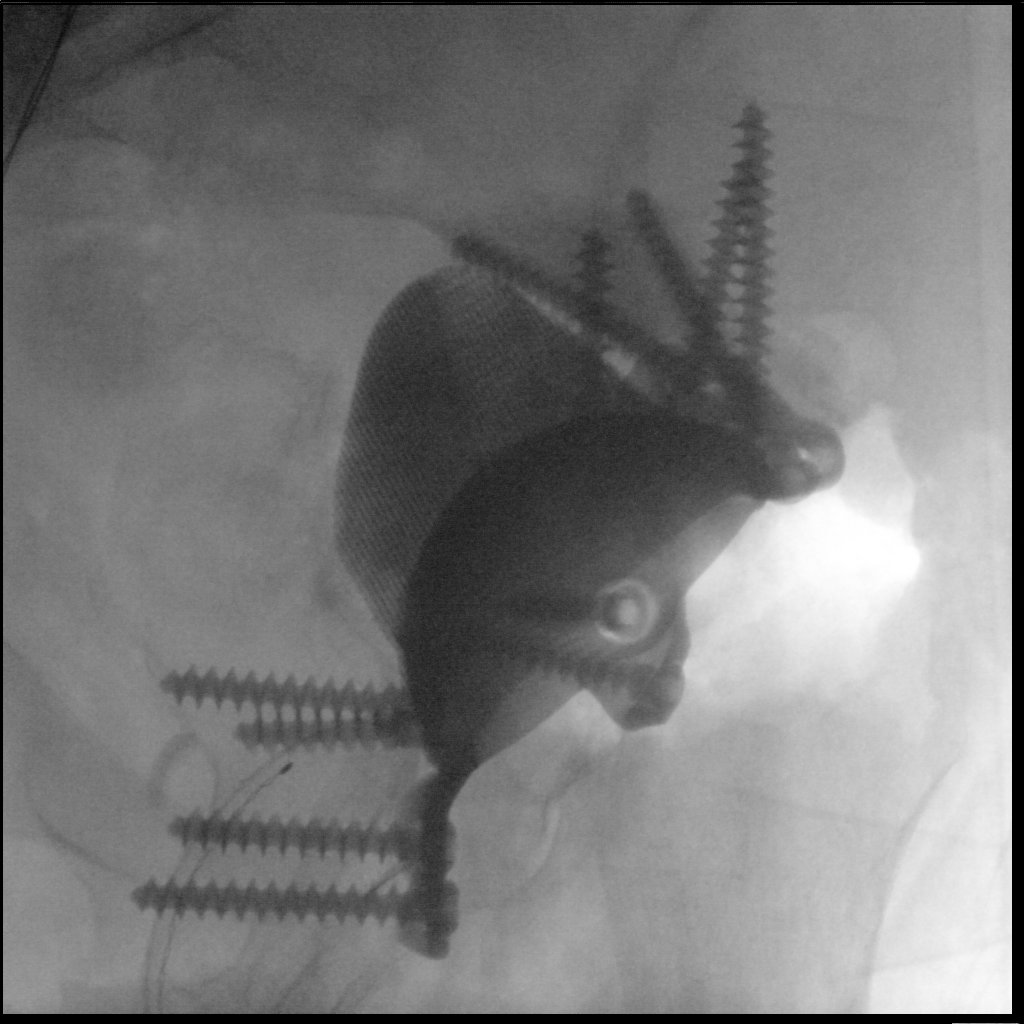
A satisfactory clinical outcome
A post-operative evaluation of the implant was done by Materialise. The conclusion was that it was well positioned, with a slight but acceptable deviation in orientation and position in comparison to the original planning. Dr. Weidert compared the surgery's results with published data by M. Baauw from the Netherlands, on the accuracy of the positioning of an aMace implant, and saw that his results were within the range of the published ones.
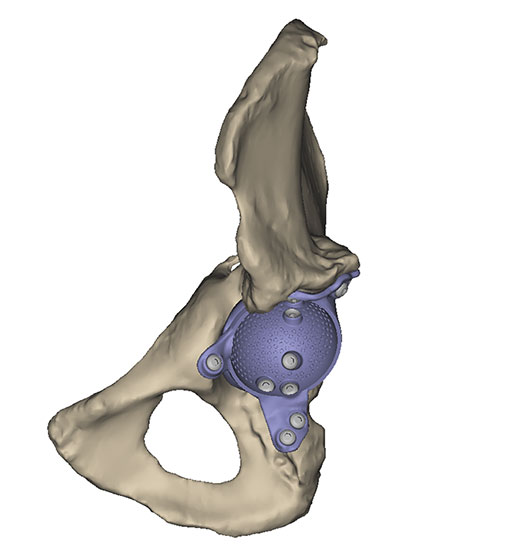
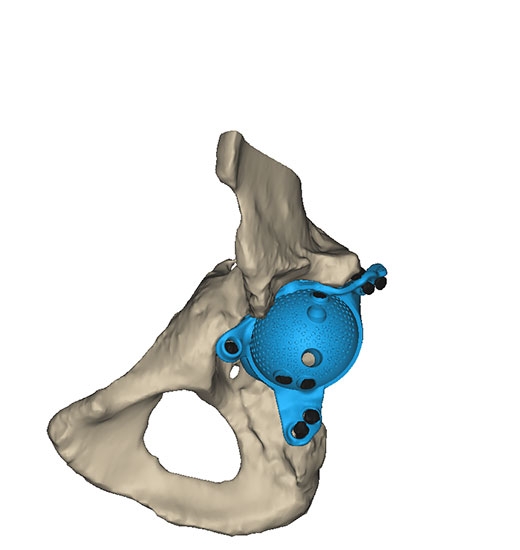
Three months later, there was only minimal leg length discrepancy remaining. There was some gluteal insufficiency, which can be linked to the patient’s inability to use his legs for two and a half years before the surgery. The patient was able to walk well without crutches however, and was still improving.
Good to know
Dr. Weidert believes that the 3D printed acetabular component is a viable option for post-traumatic acetabular defect reconstruction. He advises to pay more attention to the removal of soft tissue and bone in order to achieve the planned implant position. Dr. Weidert says:
“We concluded that maybe it’s better to stick to the plan because it saves time and it works. At least in this case, we really should have trusted the pre-op plan more – it’s a learning process.”
Now, the interesting part will be seeing the long-term results.
Print your own 3D models and implants
Materialise aims to keep you up to speed on Medical 3D Printing, and on the constant, new breakthroughs and user experiences that can be achieved with excellent planning. Please contact us and find out how you can print your 3D models and devices for your clinical practice. We'll be happy to help you.
Click here to view Dr. Weidert's webinar in its entirety, or to take a look at more of Materialise THINK 3D Printing webinar series.
